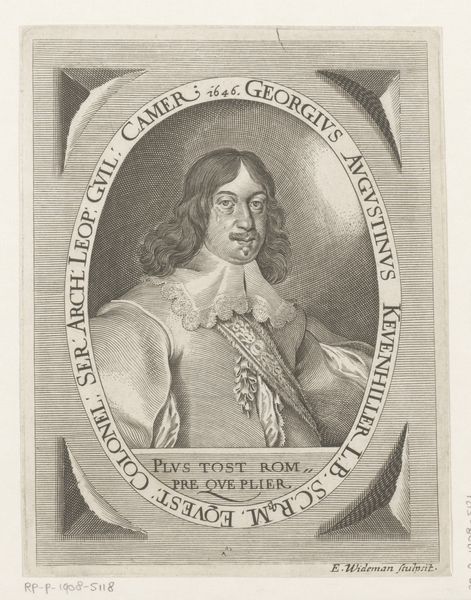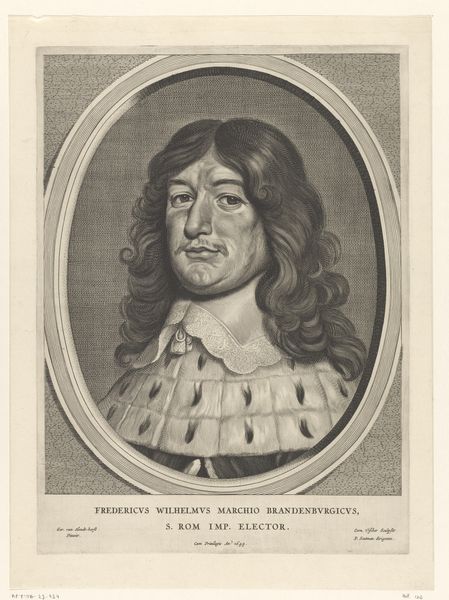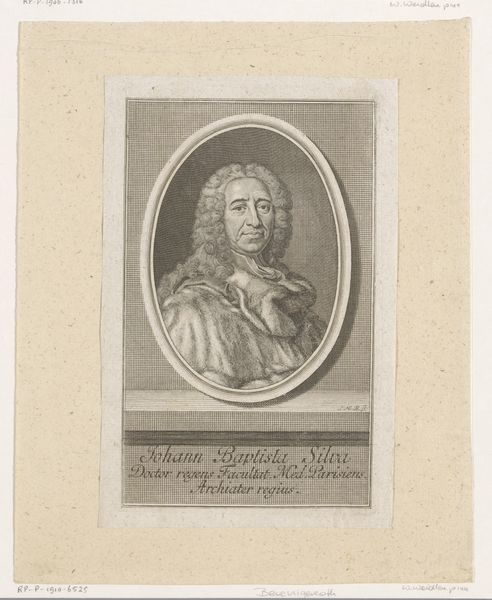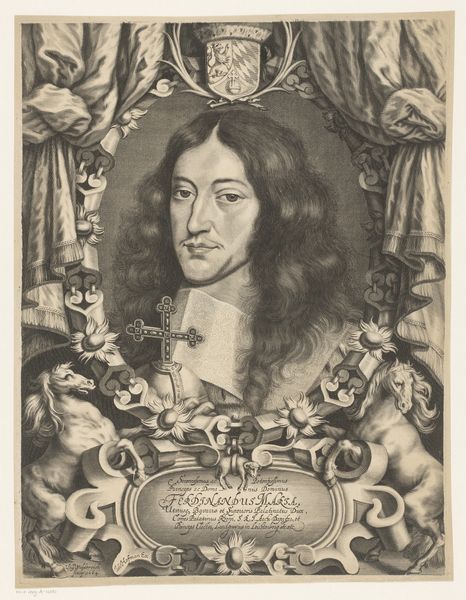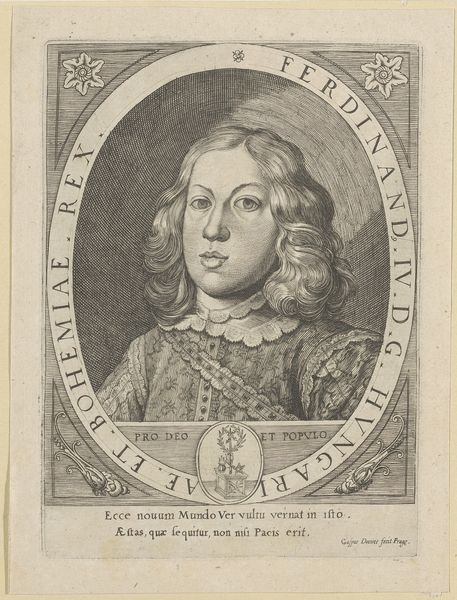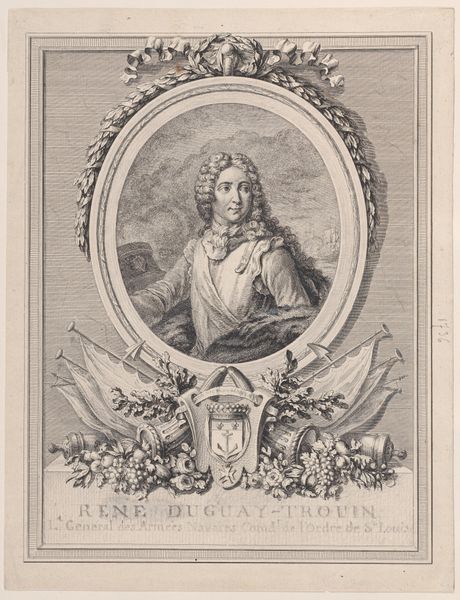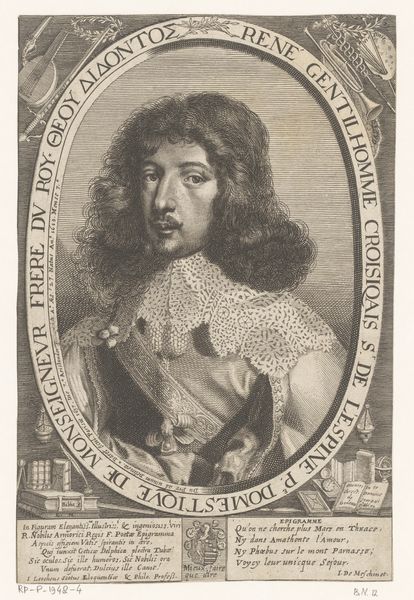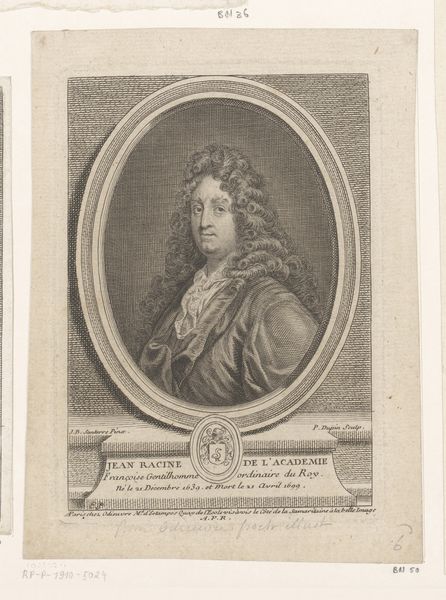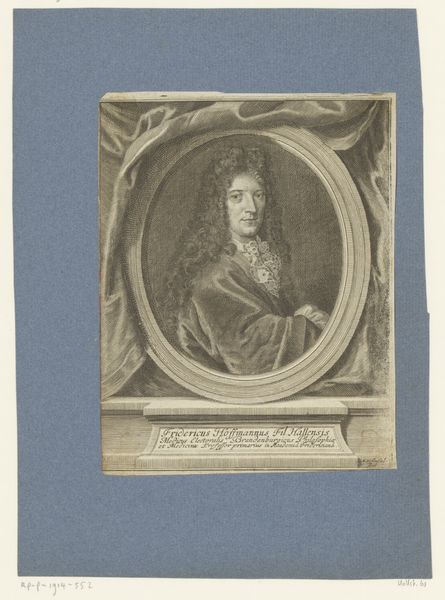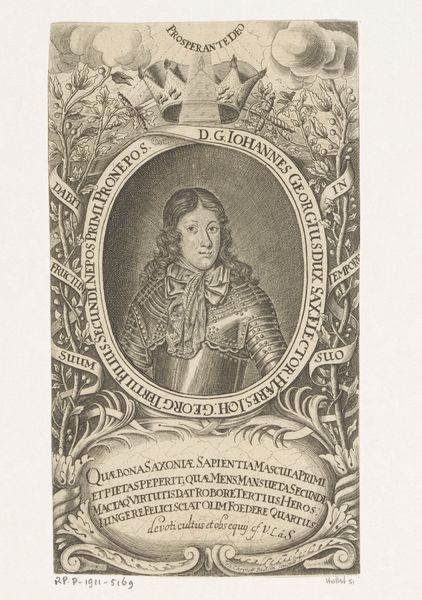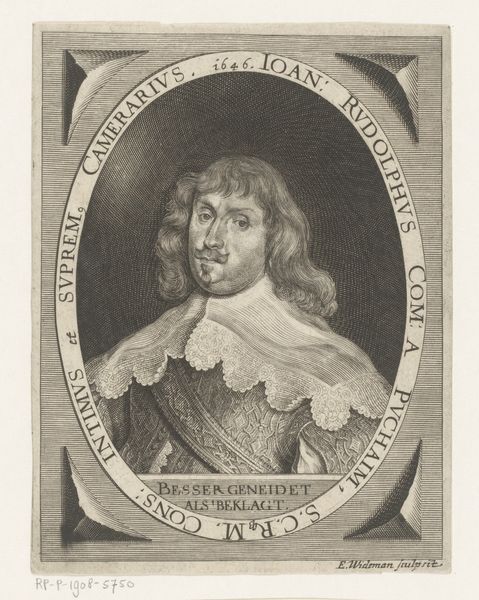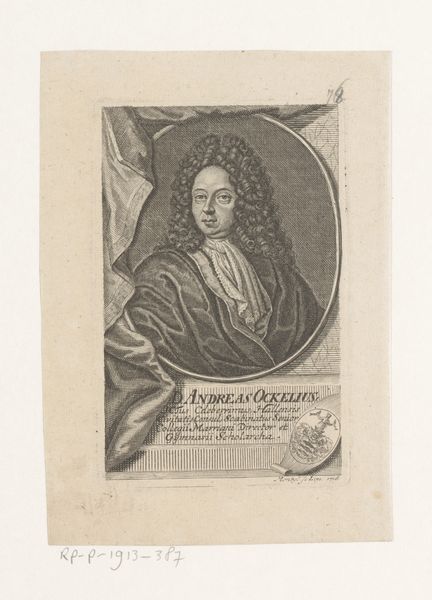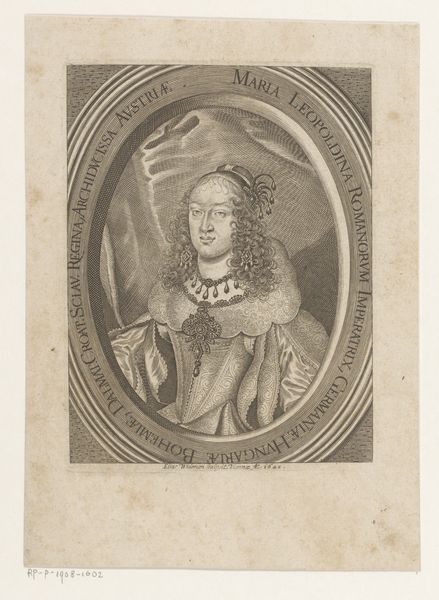
print, intaglio, engraving
#
portrait
#
baroque
# print
#
intaglio
#
history-painting
#
engraving
Dimensions: height 157 mm, width 122 mm
Copyright: Rijks Museum: Open Domain
Curator: This is a portrait of Adolph Ehrenreich von Puchaim, created in 1646 by Elias Widemann. It's currently held in the collection of the Rijksmuseum. The artwork is a print, made using intaglio and engraving techniques, characteristic of the Baroque era. Editor: The immediate impression I get is one of guarded nobility. There's a formal severity to the subject, but the swirling ornamentation surrounding him softens the overall mood. The details captured through the engraving are quite impressive, adding to this somber feeling. Curator: I'm struck by the carefully constructed iconography. Notice the inscription, "Respice Finem," meaning "consider the end." Combined with the somber portraiture style, it seems to invite the viewer to consider the brevity of life, a common motif during this period. Editor: Absolutely, and the oval frame itself, inscribed with his name and titles – Capitaneus and Comes a Puchaim – feels almost like a sarcophagus. How interesting that even the composition itself becomes a reminder of mortality and historical lineage! We must remember, Baroque portraiture was often less about likeness, and more about establishing the sitter’s place within the social order and in relation to eternity. Curator: That's a brilliant point. This image served to commemorate Von Puchaim and remind viewers of his social standing and familial prestige. The engraved medium, allowing for wider distribution than a painting, amplified this socio-political impact. It's history presented, curated and cemented. Editor: Thinking about its cultural context, engravings like this provided access to likenesses of important figures for people who couldn't commission painted portraits. This makes art available beyond the elite. Prints had a vital role in spreading images and influencing opinions across different strata of society. It certainly challenges the assumed separation of high and low art. Curator: Looking at the lasting image that Von Puchaim sought to craft here, perhaps it’s most powerful how relevant "Respice Finem" continues to feel. His material achievements and titles fall away, leaving a basic sense of our shared fate. It’s still quite compelling, centuries later. Editor: It does leave one to wonder: what are the symbols we use today to frame our own stories and convey meaning to future generations? Food for thought indeed.
Comments
No comments
Be the first to comment and join the conversation on the ultimate creative platform.
